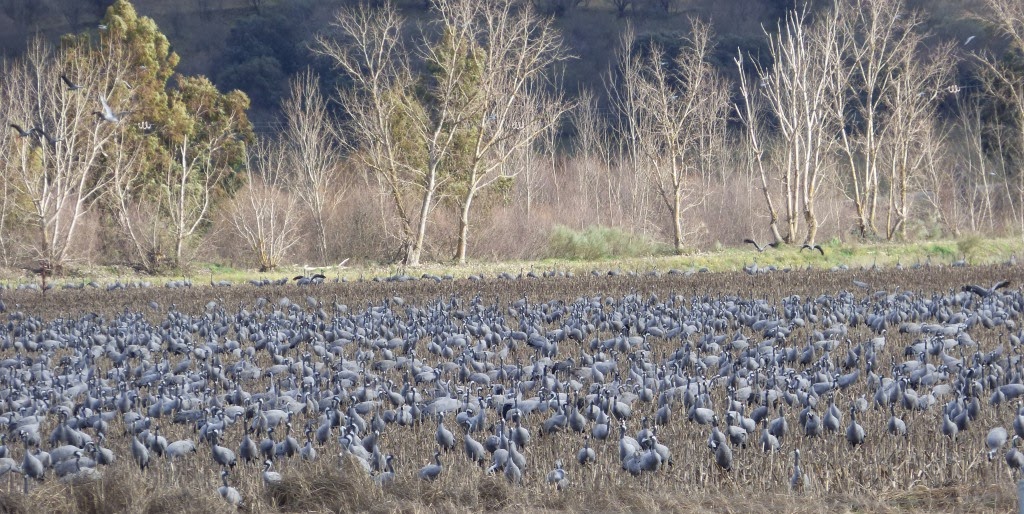 |
| Common Cranes (Martin Kelsey) |
This winter it has been yet another record-breaking bonanza for the Common Crane in Extremadura, with no fewer than 128,820 counted in December (29,000 more than December 2012, using very similar survey methods and efforts). The concentrations, especially on the rice and maize stubble, have been breathtaking. The picture above represents just part of a huge flock on maize, a photograph I took at the end of January. It is also staggering to think that in just three of four weeks time almost all of these cranes will have left, in massive exoduses, when the weather conditions are right for them. The departure of the cranes signals the end of winter for me, which means that this month of January is the last full month of winter. By late February the cranes have largely gone and the vanguard summer migrants are already well-established. Indeed as my last post described, Great Spotted Cuckoos have already turned up and over the last few days, I have been seeing House Martins. Yesterday as we stood watching hundreds of Griffon Vultures return to their roost at the largest colony in Monfragüe National Park, an adult Egyptian Vulture also appeared, almost certainly a newly arrived bird.
And the air is feeling rich with the rites of spring - certainly as far as eagles are concerned. Yesterday we were treated to the gushing exuberance of sky-dancing Spanish Imperial and Bonelli's Eagles, whilst today the gift was a copulating pair of Golden Eagles, which after the act, sat together in quiet contemplation.
 |
| Black-bellied Sandgrouse (John Hawkins) |
Curiously today I watched a piece of behaviour which I had never seen before, and for which I have not yet found an explanation. Standing with our guests Nigel, Muriel, John and Brenda, enjoying the sight of a party of Great Bustards at close range on the vast steppe-like terrain near Trujillo, I was alerted to the evocative bubbling call of a Black-bellied Sandgrouse. We had seen several already, typically appearing with their deep, rapid but heavy wingbeat. But this bird was very different. It was on its own and at great height. Most distinctly though, it was barely stroking the air, so shallow and gentle were its wing-beats. Indeed, on a return fly over a few minutes later, calling again, it traversed most of the dome of the sky on a fixed-wing glide. What was this all about? The puzzle left me scratching my head, but deep inside also exhilarated. How wonderful it is to be at a place and see a species that I have seen countless times before, and yet still experience something new, to be granted a fresh question. The potential of seeing something new, something unexplained, is what drives our curiousity, every day.





Comments
Brian Banks